
views
What is the Winter Arc?

The Winter Arc refers to an intense period of self-improvement during winter. The concept of the “Winter Arc” has been popularized by (mostly Gen Z) users on TikTok. Basically, followers of the trend set major personal growth goals and focus on them throughout the winter months (i.e., October to January). These goals are often related to fitness, nutrition, mental health, and other areas of personal development (we’ll cover the most popular focus areas later). The arc allows people to hunker down and focus on something impactful to get them through the cold winter months and use this (traditionally unproductive) time wisely. It’s a set period to develop new, healthier habits and routines with intense discipline—similar to “Dry January” or “Veganuary.” The Winter Arc has also been compared to New Year’s resolutions. However, “winter arcers” get a head start by beginning their glow-up challenge in October. So, they’ve already built some new habits by the time January rolls around! Note that the Winter Arc is meant to be super intense and disciplined—but it’s not expected that that level of intensity continues throughout the year. Rather, it’s supposed to help you develop some new habits and routines in a short period of time (some of which will hopefully shape your life moving forward).
Winter Arc Rules

The only “rules” for the Winter Arc are to be disciplined and specific in your goals. Aside from that, there’s a huge amount of flexibility in terms of what type of goal you want to set and how you’ll go about achieving it. Once you set your goals, you just have to stick to them and show up at 100% every day—or as much as possible. Most people choose to orient their Winter Arc around fitness goals. For example, they might decide to go to the gym a certain number of times per week or reach 15,000 steps a day. Other people, however, might focus on waking up earlier (and at the same time every day), eating balanced and nutritious meals, writing a daily journal entry, or getting enough sleep every night. Whatever goal area you choose, the most important thing is to be disciplined and consistent. Keep reading for more tips on starting and sticking with your Winter Arc.
When does Winter Arc start?
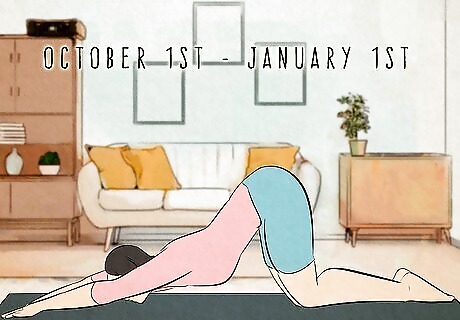
The Winter Arc starts on October 1st and ends on January 1st. That’s the traditional time period for Winter Arc season—it begins when it starts to get chilly outside, and ends with the New Year. However, if October 1st has already passed you by, don’t sweat it! As long as it’s not January 1st yet, you can still work on your personal goals until the new year (and after, obviously, but that’s technically not part of the “Winter Arc trend”). The point is just to get started on health and wellness goals before everyone else does during New Year’s resolution time.
How to Start a Winter Arc (and Stay Motivated)
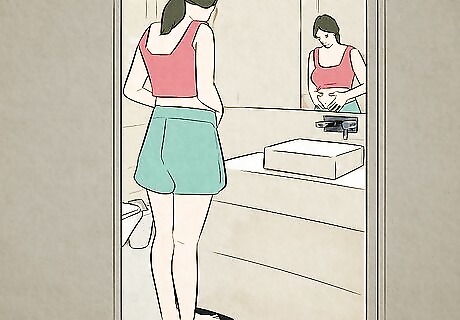
Find the “why” behind your Winter Arc. “You want to make sure that you know exactly why you’re thinking to exercise,” or hit whatever goal you’re aiming for, says Marilin Karst, a fitness choreographer. “Why is it important to you right now? Why is it important for your near- and long-term future?” Success strategist Sharon Lee affirms this advice, saying that sticking to a goal “has everything to do with the mental strength and the desire to do it—you have to have a reason to do it, and it has to be a really big reason.” So, whatever your “why” is, make sure you can clearly articulate it and keep it front of mind on difficult days. Let’s say, for example, that you’re planning to work on a fitness goal. Why do you want to get in better shape? To feel more confident? To be able to play with your kids? To improve your cardiovascular health? Once you’ve identified your “why,” consider finding a way to remind yourself of it often. You could create a vision board and place it somewhere visible in your home, or even just write your “why” on a Post-It note and place it on your bathroom mirror. If you’re getting up early to hit your goals and might be tempted to hit snooze, add a “note” to your morning alarm that talks about your “why!”

Pick 1-5 realistic, long-term goals to achieve during your Winter Arc. Choose a handful of areas to focus on during your “Winter Arc,” and be realistic about what you can achieve. If you haven’t gone to the gym in years (no shame!), setting just one goal around fitness may be the way to go. If you already have a fairly disciplined routine, on the other hand, you might be able to choose a few areas to focus on, e.g., nutrition, sleep, skincare, and flexibility. Check out the next sections for some popular “Winter Arc” self-improvement areas and expert tips on how to achieve them. Once you’ve chosen your general focus area, set a specific and realistic goal. If your goal is about self-care, maybe you’re reading 20 pages of a book every day. If your goal is to go to the gym more often, how often are you going and what time are you waking up each day to get that done? Keep in mind that these goals should be sustainable for the duration of the Winter Arc, but they don’t have to be sustainable indefinitely. This is a set period of intense, disciplined progress—not a forever thing!
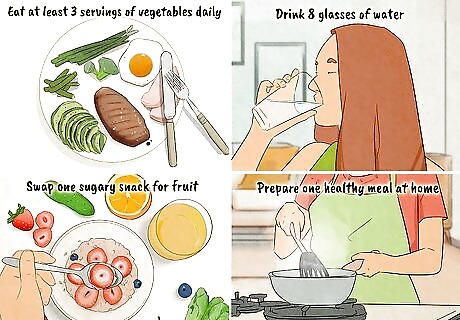
Set smaller short-term goals and schedule them into your routine. Now that you have a long-term, overarching goal, come up with smaller daily goals to work toward that endpoint. Write out a daily checklist of things you must do to complete your Winter Arc challenge, and make sure those items are specific, realistic, and achievable. Proactively plan where these to-do items will fit into your daily and weekly schedule. For example, if your goal is about fitness and nutrition, make daily goals like eating three servings of vegetables and getting 1 hour of moderate activity. “Setting up a schedule and putting it in your calendar” is very likely to help you stay on track, says fitness trainer Laila Ajani.”If it looks like there’s a workout that day, for example, you’re going to do it…It becomes a discipline that’s going to keep you going. Unfortunately, motivation isn’t something that always sticks around.”

Stay consistent, and don’t give up after a slip-up or two. Changing your lifestyle and habits “starts with consistency and a balanced approach,” says exercise and wellness specialist Souad Gharib. Focus on discipline and consistency every single day, and continue to check off your daily checklists. Certified personal trainer Monica Morris says that “consistency is one word [she] would use for anybody who’s trying to think of how to get started…Be consistent and do something small every day in the beginning in order to build a routine.” If you’re really struggling to stay consistent and self-motivated, try little tricks like “laying out your gym clothes the night before or leaving out your gym bag,” continues Morris. If possible, ask a friend or loved one to do the Winter Arc with you, since having a “partner is one of the [best] ways for people to get back into a routine.” If you can’t find someone to do the challenge with you, Morris still recommends that you “share your progress with someone in your life or a partner in your life who’s going to ask you if you went” to the gym or hit your daily goals. “That seems to motivate a lot of people,” says Morris. However, while focusing on consistency, remember that it’s also normal to have unforeseen circumstances or slip-ups that cause you to miss a day. This doesn’t mean that you’ve completely failed the Winter Arc, so don’t let it get you down. Just pick up the next day! “I feel like consistency over time, even in small doses, has a much larger effect and is way more important than perfect workouts or really long workouts or anything else you can do,” says Ajana. “It doesn’t really matter what your [goal or] program is, as much as you showing up more frequently and consistently.”
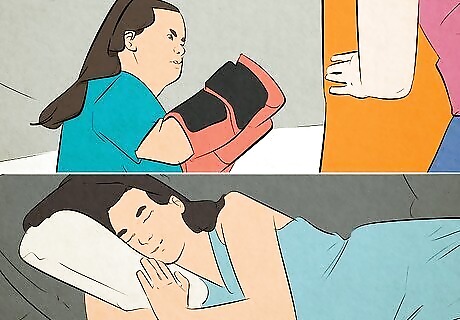
Strive for balance and be aware of your limitations. Even though the Winter Arc is supposed to be an intense, highly-disciplined challenge, you shouldn’t be pushing your mind or body past what it can reasonably do in a healthy, sustainable way. That’s not a weakness—you’re just human! If you need a day off in order to get the fuel you need to keep going, do that. If you need to make your daily goals smaller and more manageable in order to keep making actual progress, do that. Over-exercising or under-eating can be just as unhealthy as under-exercising and over-eating. For instance, “If you’re training more and being very attentive to your food,” notes wellness coach and personal trainer Alyssa Chang, “you also need to make sure that recovery methods are all in place. You need to be sleeping soundly and enough in order for your body to make those changes.” Also, keep in mind that this isn’t an overnight transformation. As you keep notes on your progress, remember that this is a multi-month process to becoming a better version of yourself—it doesn’t mean that your entire life or body will change overnight. It’s all about the journey!
Popular Focus Areas for a Winter Arc Transformation

Fitness Fitness is a very common goal in the Winter Arc challenge, and there are a lot of different ways to achieve it! If you’re trying to improve your overall physical health and physique, Gharib advises to “lift weights to build lean muscle mass and focus on hip thrusts, squats, lunges, and deadlifts to build your glutes. Then, do upper body workouts to tone your arms and back.” Certified fitness coach Danny Gordon also recommends “cross-training,” especially if you already have a solid workout routine and want to level up a bit. “With strength-training,” continues Gordon, “you need to do barbells, you need to do circuits, but also you need to do different types of exercises for the muscle groups. You can’t always just do dumbbells. If that’s all you have, then that’s what you work with, but variety is key.” Along with strength-training and cardio goals to make your body “strong and firm,” says certified dance and yoga instructor Val Cunningham, be sure to also include “yoga or flexibility or stretching [to] make sure that your body is flexible…[that will] help your body be better and at its best.” Also, don’t feel like you just have to lift weights if that’s not your thing! Try to find something that moves your body that you also enjoy, like dance, swimming, pole dancing, or aerial silks. You could also try a ~cozy~ fitness activity (it is winter, after all!), like Pilates or yoga. “Having a fun experience will keep you coming,” affirms Karst, “and it will make it more positive and exciting for you to exercise than if you’re doing something that…is boring, per se.”

Nutrition If you want to focus on nutrition, registered dietitian Amy Chow advises focusing on eating more “whole foods, because whole foods are often quite nutrient-dense, and they don't necessarily come with a nutrition label. So these are your whole fruits and vegetables. We know that they're packed with vitamins and minerals, but they're low in calories." At the same time, adds board-certified physician Sari Eitches, MBE, MD, “have a good combination of macronutrients, protein, high fiber, carbohydrates, and fat, and have…food that’s closest to its whole food unprocessed ingredient as possible." Certified nutrition consultant Lyssandra Guerra also recommends “alternative foods and vegetables. So, this week, let’s focus on arugula and romaine. And let’s focus on broccoli and cabbage—try introducing two to four new vegetables a week.” Registered dietitian nutritionist Kelly Gomez also states the importance of “diversifying your diet, because humans need to get a lot of variety. There's research that’s shown, if we can get 20+ different types of plant foods in our diet in a week, that can really impact our gut microbiome and our health.” However, it’s also important to avoid restrictive eating. “Think more holistically about food as nutrition that feeds us,” says Dr. Eitches. “There’s no food that is ’illegal,’ or not allowed, or a ‘cheat.’ Rather, have awareness around things like, if it’s the first thing in the morning and we’re hungry and need fuel, it’s not the time for fun food. That has to be a conscious decision.” Tara Coleman, a clinical nutritionist, shares this viewpoint, advising that you don’t focus on what’s being taken away, but what you’re adding. “For instance, instead of ‘I’m not going to have carbs at dinner,’ try ‘I’ll have protein and carbs, but I’m going to add some extra vegetables to get more nutrients in there.’”
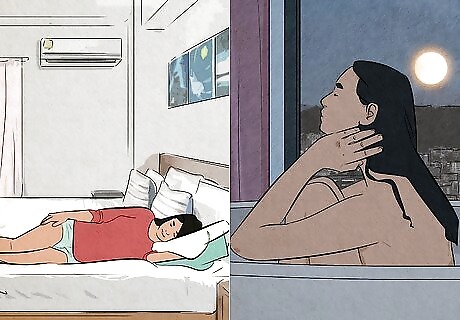
Sleep & Self-Care “Self-care is extremely important to make yourself feel good and combat mental health problems,” says therapist Rebecca Tenzer, MAT, MA, LCSW, CCTP, CGCS, CCATP, CCFP. “It doesn't have to be expensive, time-consuming activities. Taking realistic amounts of time out of each day to focus on yourself can make a world of difference.” For example, makeup artist Cordelia Frost shares a personal self-care routine of “lighting candles in the bathroom…turning off the lights, putting on some soft music, running a bubble bath,” and using hair and face masks. And, don’t forget about one of the simplest yet most effective self-care tools: sleep! “Sleep is often overlooked,” notes Chang, but “it's the one place where our body restores muscle tissues, detoxifies, and then allows our other side of the nervous system, the parasympathetic side of the brain, to regulate." In fact, board-certified dermatologist Asmi Berry, FAAD, lists “getting enough sleep” as one of the essential steps to having an overall healthy body and mind, along with “dealing with stress, drinking 8-10 glasses of water a day, and eating plenty of nutrient-rich foods.”

Skincare It’s a really good idea to focus your Winter Arc on “investing in your skin,” says certified image consultant Sheila A. Anderson. “Your skin reveals a lot about your health and habits, so it is vital to take care of your body's largest organ. Exfoliate your skin, including your face and body, up to three times per week. Use a skincare system on your face, and remember to moisturize the rest of your body” with a body oil or lotion. For a simple but effective starting regimen, Dr. Berry advises starting with cleanser, “sunscreen, a nighttime retinol, moisturizer, and vitamin C serum.” Even 15 minutes a day is enough to improve your skincare routine—“in 15 minutes,” explains skincare professional Diana Yerkes, “I would double-cleanse my skin, so I’d wash my face twice, and I’d do a face mask. Something brightening or hydrating, or anything that is going to give your skin a glowy and healthy look.”
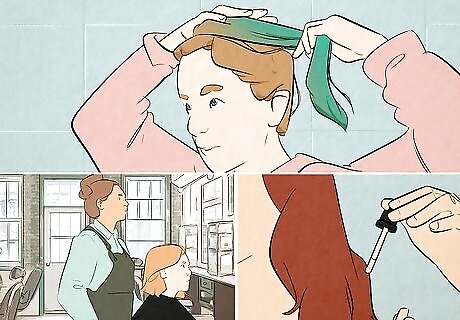
Haircare Haircare might seem like a small thing, or even a luxury, but it can contribute a lot to your overall sense of confidence, self-worth, and wellbeing. If you want to take better care of your hair as part of your Winter Arc, start by “properly shampooing, conditioning, and treating your hair,” instructs hair stylist Shun Pittman. “Proper cleansing is really important, and making sure the scalp is clean is essential because, if there’s lots of buildup on the scalp, the buildup makes hair growth hard.” Opt for “sulfate-free shampoos that don’t contain ‘sodium laureth sulfate,’” adds professional hair stylist Yan Kandkhorov. Aside from basic cleansing and conditioning, professional hair stylist Jenny Tran recommends that you “go get haircuts more frequently and invest in silk or satin hair ties and pillowcases,” which can reduce frizziness and breakage. “In between haircuts,” adds Pittman, follow “a healthy diet and drink lots of water. Water is like nature’s cheapest and most effective medicine.” “If you use heat and thermal styling tools,” continues Pittman, “limit them to two or three times a week maximum, and be sure to use a thermal protectant spray.”

Style & Wardrobe Dressing in a more polished and stylish way can boost your own confidence, and it can also make others perceive you in a more positive—and even professional—light. If you’re trying to improve your wardrobe or build up your personal style, Anderson advises to “wear colors that flatter your skin tone” and to “pay attention to how some colors uplift your face, while others cast shadows against it.” “Knowing your best color palette can really boost your confidence and enhance your appearance,” affirms color analysis expert Maja Koziara. “Even wearing a simple top, when it's in your color palette, can make your skin tone look super radiant—and you look almost like you're wearing makeup." When it comes to picking out garments, aim to “dress in quality classic pieces,” adds Anderson. “Trends should only take up about 20% of your wardrobe. Your primary investment should be buying the best quality you can afford. These essential classic pieces are timeless and will last you for years. You will look more polished and put together in them.” Also, Anderson continues, “pay attention to the fit of your clothing. You will look and feel better when clothing fits your body. Investing in a good tailor will save you money in the long run and will help elevate your look.”

Self-Image & Confidence A negative self-image is a huge factor that can hold you back from living your best life and being the best version of yourself. You could have your dream body, a healthy diet, and everything else you’ve ever wanted, and still feel bad about yourself if you have low self-esteem. Plus, if you raise your self-esteem, that can give you the energy and confidence you need to achieve other important goals in your life. As relationship coach Nicole Moore notes, “confidence is the number one thing that people find sexy in another person.” And, this is still true if you’re just faking it! “Even if you don't feel confident,” says life coach Sandra Possing, “you can straighten out your spine. You can drop your shoulders down and back." In terms of actionable steps toward an improved self-image, try practicing positive affirmations, reframing any negative thoughts you have about yourself, facing image-related fears (like wearing an outfit that you feel self-conscious in), or taking better care of your overall appearance.
What’s the point of doing the Winter Arc?
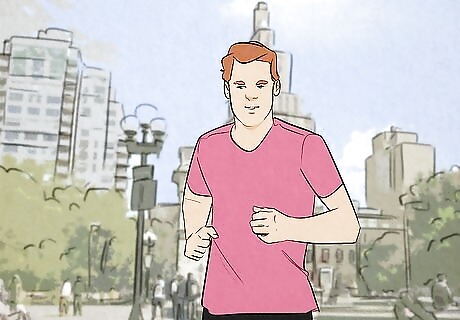
The Winter Arc can help you build new, healthier habits in a short period of time. Winter is a time of year when it’s easy to be more sedentary and treat yourself to comfort and coziness—which can be totally okay! But, if you want to make some changes in your life, winter can also be a good time to work on new goals, since social engagements and outdoor activities will be taking up less of your time. Plus, since it takes an average of 66 days of consistency to form a new habit, giving yourself a set time period (i.e., October through January) can help you stick to your new routines long enough to make them last. The specific timeframe can also help with motivation. Rather than feeling like you have to keep up this routine forever, you know that you get to stop at some point and just have to push through until the new year. Then, you can adjust your routine to something more sustainable. Plus, winter is actually a highly beneficial time to exercise, if that’s your Winter Arc goal. Exercising in a colder environment makes your heart work harder to circulate blood, which can improve your calorie burn and overall cardiovascular health.



















Comments
0 comment